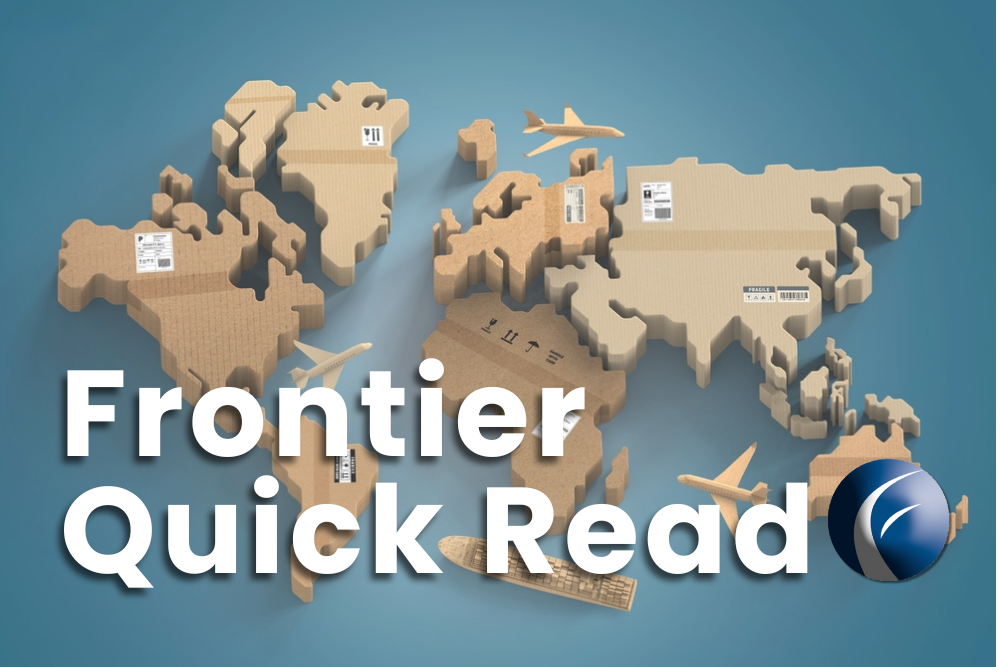
The shipping wars are heating up as the two giants vie for market dominance in shipping and logistics: UPS vs FedEx. Recent changes in dimensional weight policies, structural reshuffling, and holiday-season rate hikes are reshaping the freight landscape. For manufacturers reliant on dependable shipping, the pressure to adapt is mounting.
Let’s explore what the freight logistics companies are throwing on the table and how manufacturers can come out on top by using their current ERP and distribution software.
Dive Into UPS vs FedEx and the Changes Being Made
Here’s a play-by-play of the current punches the big players are throwing down.
Dimensional-Weight Rounding
As of August 18, 2025, both FedEx and UPS will round up any fractional inch in a package’s length, width, or height to the next whole inch. This change doesn’t seem to be a positive one for manufacturers since it adds cost pressure, especially for bulky yet lightweight packages. An example would be textiles like pillows or custom-made sofa cushions.
Structural Changes at FedEx
FedEx is undergoing a strategic overhaul with its freight division spinoff, aiming for sharper focus, operational efficiency, and healthier margins. Simultaneously, their Network 2.0 consolidation effort is closing and downsizing multiple ship centers, advancing cost reductions while promising minimal impact on delivery times. Shippers, however, remain wary of potential service disruptions.
Moreover, mass layoffs at FedEx’s Fort Worth facility are materializing as major clients shift logistics to third parties, highlighting the volatility of reliance on large-scale carriers.
Rate Hikes Across Couriers
Looking ahead to the 2025 holiday season, major carriers are rolling out peak-season price hikes. This is yet another hard hit to manufacturers that must pass the cost on to their customers in most cases.
- FedEx has already confirmed holiday surcharges, scheduled between late September and mid-January, with increases ranging from $0.40 up to $108.50 per package, depending on size, distance, and service.
- UPS is expected to follow with similar seasonal surcharges, though details remain pending.
- While not a heavyweight in the large shipment field, USPS is raising rates across services such as Ground Advantage, Priority Mail, Priority Mail Express, and Parcel Select. Increases ranging from roughly 5% to 5.8% will be effective October 5, 2025, through January 18, 2026 (subject to regulatory review).
The Impact of Shipping and Freight Logistics on Manufacturers
Cost Volatility
Dimensional weight rounding and holiday surcharges can significantly affect shipping expenses, especially for manufacturers shipping bulky, irregularly shaped, or lightweight products. Even small fractional increases in package dimensions can translate into higher shipping fees per shipment. For example, a manufacturer shipping large window frames or furniture components could see a dramatic spike in costs due to rounding up each dimension.

Seasonal surcharges during peak periods add another layer of unpredictability, making budgeting and pricing more challenging. For businesses with tight profit margins, these fluctuations can erode profitability unless carefully monitored and managed. A scenario: a mid-sized cabinet manufacturer shipping 500 LTL packages per month could see quarterly shipping costs increase by thousands of dollars simply due to dimensional weight adjustments and peak surcharges, directly impacting their bottom line.
Operational Uncertainty
Carrier restructuring, spinoffs, and facility closures may lead to inconsistent transit times, altered routes, or capacity constraints; essentially, a freight recession. A sudden change in a hub location or a closed shipping center can delay deliveries and disrupt manufacturing schedules. For instance, a FedEx Network 2.0 facility closure could reroute packages through longer transit paths, impacting just-in-time production or customer fulfillment timelines. Manufacturers relying heavily on one carrier may experience delays that ripple across the supply chain, affecting production planning, inventory management, and ultimately, customer satisfaction.
Vendor Risk
Relying on a single shipping provider increases exposure to service disruptions and unexpected cost spikes due to corporate shifts, layoffs, or policy changes. For example, if a manufacturer’s primary carrier enacts a sudden rate increase, restructures its freight operations, or experiences workforce shortages, it may be forced to absorb extra costs or scramble to find alternatives. Diversifying carriers and having contingency plans can reduce this vulnerability, but manufacturers need visibility and tools to monitor and respond to changes effectively.
What Can Manufacturers Do to Buffer the Shipping Wars
Diversify Carriers
Avoid putting all your eggs in one basket. Using multiple carriers, or strategically mixing parcel services with LTL shipping, can reduce exposure to disruptions and rate increases. For example, if UPS experiences hub congestion or delays during a peak holiday period, having FedEx or a reliable freight partner ready ensures that shipments continue moving on schedule. Diversification also allows manufacturers to leverage the best pricing, service levels, and routes for each type of product.
Optimize Packaging
Right-sizing and densifying packages can minimize dimensional weight penalties and reduce shipping costs. This “war on air” approach involves adjusting packaging to eliminate unnecessary space without compromising product protection. For manufacturers of custom furniture, cabinetry, or other bulky items, intelligent packaging design can significantly reduce per-shipment expenses. Even small adjustments in packaging dimensions can yield measurable savings when multiplied across hundreds or thousands of shipments.
Negotiate Contracts
Carrier agreements are not set in stone. With FedEx unwinding bundled LTL/parcel contracts and UPS adjusting peak-season surcharges, manufacturers have an opportunity to renegotiate rates, service levels, or delivery guarantees. Proactive contract management can help secure better pricing and more predictable shipping terms, reducing the risk of sudden cost spikes or service limitations.
Leverage ERP Technology

A modern ERP system, like Frontier ERP, can act as a logistics command center. It can integrate real-time rate logic, simulate surcharge impacts, automatically switch carriers based on cost or service, and optimize dispatch planning. By leveraging ERP technology, manufacturers can maintain visibility into shipping costs, track delivery performance, and adjust routing and freight modes in real time, effectively insulating the business from volatile shipping markets.
Frontier ERP’s Answer to Shipping and Logistics
Frontier ERP offers a comprehensive solution to the challenges posed by the shipping wars, enabling manufacturers to maintain control, reduce costs, and improve delivery reliability.
Dispatch Planning for Truckload and LTL Shipping
Frontier ERP optimizes full truckload and LTL shipments automatically. By analyzing shipment size, weight, distance, and cost, the system identifies the most efficient and economical shipping options. This ensures manufacturers are using the right mode for the right shipment, reducing unnecessary freight spend while improving delivery performance.
Freight Logistics Partner Varsity Logistics
Through its partnership with Varsity Logistics, Frontier ERP provides scalable, transparent, and adaptive logistics support. By integrating human expertise with carrier networks, this solution ensures flexibility and resilience amid carrier disruptions, rate changes, or fluctuating freight volumes. Manufacturers gain access to real-time guidance and strategic planning to manage shipments proactively rather than reactively.
By combining advanced dispatch planning with partner networks, Frontier ERP empowers manufacturers to stay agile, efficient, and cost-conscious, even as UPS vs FedEx and broader freight markets continue to evolve. Businesses can reduce risk, control shipping costs, and maintain consistent service levels, turning potential disruptions into opportunities for improved operational efficiency.
Conclusion
The shipping wars: UPS vs FedEx are more than marketing rhetoric; they represent real cost pressures, shifting capacities, and strategic upheavals in shipping and logistics and freight logistics. For manufacturers, the impact is clear: unpredictability in costs, services, and delivery reliability. But by embracing smart ERP systems like Frontier ERP, backed by innovative solutions such as dispatch truckload planning and freight logistics partner Varsity Logistics, businesses can maintain control, turning logistical turbulence into operational advantage.
Want to learn more? Contact us today for an informative demonstration.




